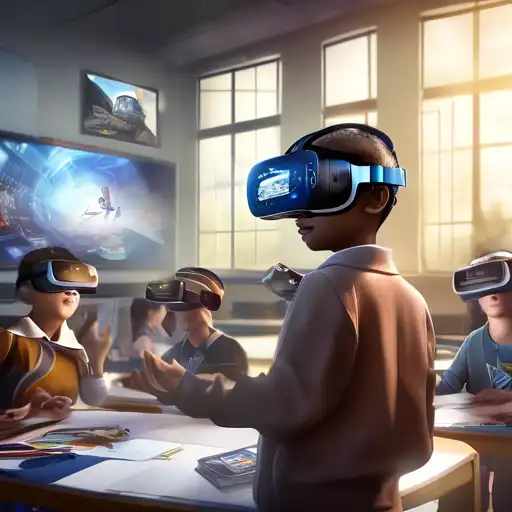Introduction to Virtual Reality in Education
Virtual Reality (VR) is revolutionizing the educational landscape, offering immersive learning experiences that were once unimaginable. This technology transports students to virtual worlds, making learning more engaging, interactive, and effective. As we delve into the potential of VR for education, it's clear that we're standing on the brink of a new era in teaching and learning.
The Benefits of Virtual Reality for Students
VR in education provides numerous benefits, including enhanced engagement, improved retention rates, and the ability to simulate real-world scenarios. Students can explore ancient civilizations, dissect virtual frogs, or even walk on the surface of Mars, all from the safety of their classroom. This hands-on approach to learning fosters a deeper understanding of complex subjects.
Engagement and Motivation
One of the key advantages of VR is its ability to captivate students' attention. Traditional learning methods often struggle to maintain student interest, but VR's immersive nature ensures that learners are fully engaged in the material.
Accessibility and Inclusivity
VR also offers unparalleled opportunities for students with disabilities, providing them with experiences that might otherwise be inaccessible. For example, students who are unable to travel can still experience the wonders of the world through virtual field trips.
Implementing VR in the Classroom
Integrating VR into educational settings requires careful planning and consideration. Schools must invest in the necessary hardware and software, as well as train teachers to effectively incorporate VR into their lesson plans. Despite these challenges, the potential rewards make VR a worthwhile investment for the future of education.
Choosing the Right VR Tools
With a variety of VR platforms available, educators must select tools that align with their curriculum goals. Whether it's Google Expeditions for virtual field trips or Labster for virtual science labs, the right VR application can transform the learning experience.
Overcoming Challenges
While VR offers exciting possibilities, there are hurdles to overcome, such as the cost of equipment and the need for technical support. However, as technology advances and becomes more affordable, these challenges are likely to diminish.
The Future of VR in Education
As VR technology continues to evolve, its role in education is expected to expand. Future developments may include more personalized learning experiences, greater collaboration between students in virtual spaces, and even more realistic simulations. The possibilities are endless, and the impact on education could be profound.
For more insights into innovative learning technologies, explore our technology section.
Conclusion
Virtual Reality is setting the stage for a transformative shift in education. By providing immersive, interactive learning experiences, VR has the potential to enhance student engagement, improve learning outcomes, and make education more accessible to all. As we embrace this new era, it's clear that VR will play a pivotal role in shaping the future of learning.
